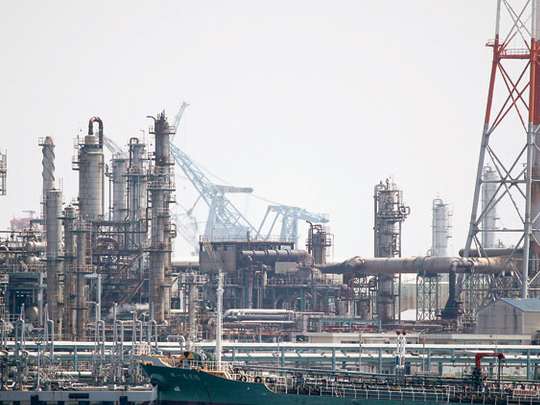
New York : Oil rose for a second day in New York, buoyed by advancing equity markets and speculation that crude's 7 per cent drop this month has been excessive relative to the economic outlook.
Oil climbed as much as 1.5 per cent as European stocks rebounded from a five-week low and the MSCI Asia Pacific Index snapped two days of losses. The investment appeal of commodities was boosted as the dollar weakened against all but two of its 16 most-traded peers. US crude inventories last week surged more than 10 times the amount forecast by analysts, Energy Department data showed yesterday.
"While yesterday's bearish US oil statistics and economic data cast a shadow over the market, rallying stock markets and demand from other parts of the world like China are providing support," said Christopher Bellew, senior broker at Bache Commodities in London.
Crude oil for October delivery rose as much as $1.11 to $73.63 (Dh270.34) a barrel in electronic trading on the New York Mercantile Exchange, and was at $73.49 at 11:36 am London time. Brent crude oil for October settlement increased $1.09 to $74.57 a barrel on the London-based ICE Futures Europe Exchange. The dollar traded at $1.2715 per euro, down from $1.2659 yesterday.
Oil advanced 1.2 per cent yesterday as US equities snapped a four-day losing streak. The gains came even as crude stockpiles rose 4.11 million barrels to 358.3 million barrels last week, according to a report from the Energy Department. Inventories were forecast to climb 300,000 barrels, according to the median of 17 analyst responses in a Bloomberg news survey.
Crude's 14-day relative strength index was at 39.6, compared with 65 three weeks earlier. A reading of 30 indicates that prices are oversold and may rally.
London-based Premier Oil expects short-term "weakness" in prices before they return to a "reasonable" level of $80 a barrel in the longer-term, chief executive officer Simon Lockett said yesterday.
Kuwait is satisfied with oil prices and expects them to pick up in the fourth quarter, oil minister Sheikh Ahmad Al Abdullah Al Sabah said on Wednesday.
US gasoline inventories rose 2.27 million barrels to 225.6 million in the week ended August 20, the report showed. A 450,000-barrel drop was projected.
Total consumption of petroleum products averaged 19.5 million barrels a day last week, down 1.2 per cent from the seven days ended August 13, the report showed. Crude imports increased 3.4 per cent to 9.88 million barrels a day, the highest level since the week ended July 23.
"The US stock levels are so high that it is difficult to price any risk premiums," Olivier Jakob, managing director at consultants Petromatrix, said in a report yesterday. "At current stock levels any disruption from a hurricane will not be difficult to manage."
Tropical Storm Earl, the fifth named storm of the Atlantic season, developed "ahead of schedule" off the coast of Africa to join Hurricane Danielle on a trek to the west, the National Hurricane Centre said. The 2010 season has been ahead of the statistical average since June, when the first hurricane of the year formed.
Gasoline
bearish trend surfaces
Gasoline futures may drop below $1.34 (Dh4.92) a gallon by year-end after confirming a bearish "head-and- shoulders" trading pattern, according to technical analysis by United-ICAP.
A head-and-shoulders pattern occurs when prices form three consecutive peaks, with the middle being the highest.
The pattern, with "shoulders" on January 11 and August 3 and the "head" on May 3, signals futures will tumble after exhausting a rally from December 2008 to May that saw prices triple, according to Walter J. Zimmerman Jr., vice-president of market analysis at United-ICAP in Jersey City, New Jersey.
The pattern was confirmed on August 23 when gasoline broke below the previous intraday low of $1.9008, Zimmerman said. The price target was calculated by measuring the distance from the "head" of $2.4411 on May 3 to a support line connecting intraday lows from December 11, February 5 and May 25 at $1.8883, according to Zimmerman. A similar drop would send prices to $1.3355 a gallon.
"The only hope for the bulls is it gets above $1.952, where the neckline is for the head and shoulders," said Zimmerman. "To avert the case for a longer-term decline to $1.34, we need a decisive close above that."
Gasoline for September delivery settled yesterday at $1.8639 a gallon on the New York Mercantile Exchange.
— Bloomberg












